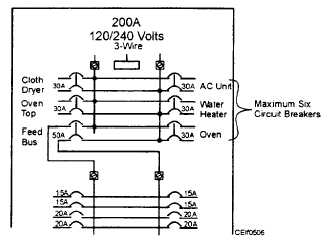I have a 40 yr old home with circuit breakers. While looking for the breaker to turn off a circuit (I was replacing a light switch), I found that two breakers, on the same side of the bus, but separated by a few other breakers, both disconnect the circuit. To be clear, I am telling you that I can turn off either one of these to kill the hot wire in the switch box. The only thing I can think of here is that somehow one of the breakers is feeding the other. I've never seen a circuit behave like this.
This is similar to the other thread on this site about "Two breakers switches control the same thing" except in my case, I have the opposite result: either of the two breakers will kill the circuit.
Is there any reason this may have been done on purpose? Is this allowed by code?


